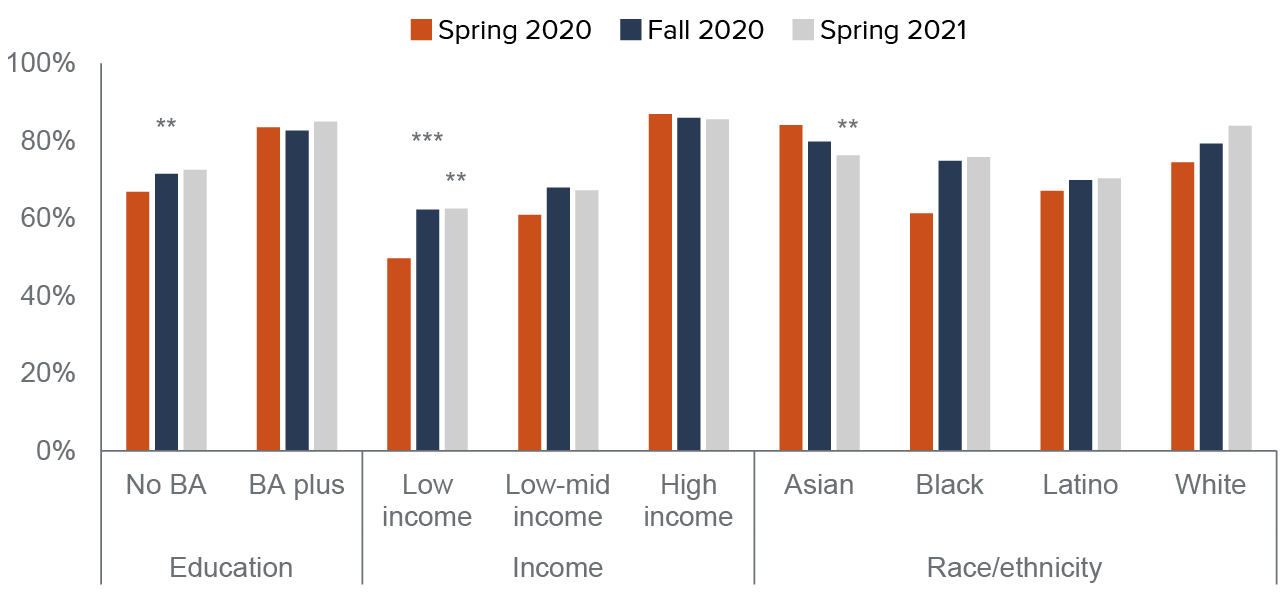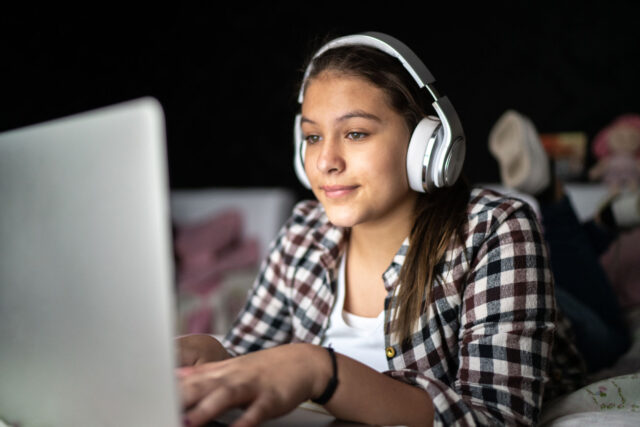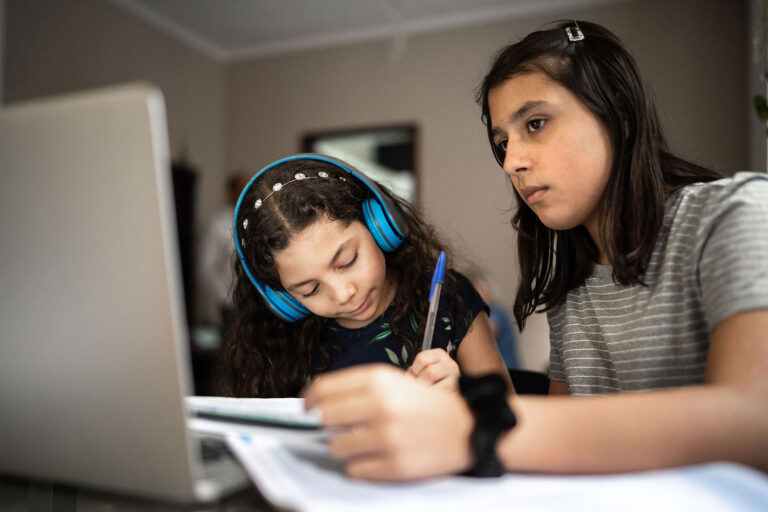This fact sheet focuses on the latest available data, from 2020, 2021, and 2022.
COVID-19 made digital access an educational necessity—and highlighted longstanding gaps.
- At the outset of the pandemic, as schools shifted abruptly to distance learning, about seven in ten (71%) California households with school-enrolled children (or K–12 households) reported always having internet access for educational purposes, according to the US Census Bureau’s Household Pulse Survey.
- Broadband access was lower among low-income (57%), Black (61%), Latino (67%) K–12 households and those headed by non–college graduates (67%).
Federal, state, and local efforts have helped bridge the digital divide.
- Three rounds of federal stimulus over the past two years have delivered more than $15 billion to California schools. Schools used some of this money to provide more than 2 million devices and nearly 1 million connections to students in need during the 2020–21 school year.
- The state established several public-private partnerships to secure devices for students, and districts across the state outfitted school buses with Wi-Fi, partnered with internet service providers, or built their own cellular towers.
- Several school districts and counties launched local initiatives before and during the pandemic to provide their students with internet access, including Imperial County, Fresno Unified, Lindsay Unified, and Ventura County.
Many students have gained greater access . . .
- The share of K–12 households with reliable access to a computer device rose from 68% to 82%, from spring to fall 2020.
- Gains in reliable access to internet service moved at a slower pace, from 71% to 75%. This reflects the challenges of reaching households in remote areas that do not have internet infrastructure and low-income households in crowded urban areas that cannot afford reliable internet.
- Low-income K–12 households and K–12 households headed by someone without a bachelor’s degree experienced significant gains in reliable access to both devices and internet. Black and Latino K–12 households saw dramatic increases in device access but made no gains in internet access.
. . . but major digital equity gaps persist.
- The share of households with school children with full digital access—to both a computing device and an internet connection—for educational purposes increased from 60% in spring 2020 to 69% in fall 2020; but progress stalled at 71% in spring 2021.
- Full digital access remains lower among Latino (63%), Black (71%), and low-income households with school children (59%).
- The persistence of these gaps may reflect the longer-term, capital-intensive challenge of providing broadband access, compared to the relative simplicity of distributing mobile devices.
Internet access gaps persisted in spring 2021

SOURCE: Household Pulse Survey, US Census Bureau, 2020–21.
NOTES: Low-income households have annual income (in 2019) less than $50,000 and high-income households have annual income above $100,000. We report significance of differences across time within each group, compared to spring 2020 values: **: p<0.05; ***: p<0.01.
Continued state and federal support can help California schools close remaining gaps.
- More than 400 California districts have applied for the federal Emergency Connectivity Fund (ECF) since summer 2021, providing devices to 1.2 million students and connecting about 900,000 students to broadband during the 2021–22 school year. The FCC recently extended the service delivery date to June 2023.
- California Senate Bill 156’s $6 billion investment in middle-mile ($3.25 billion) and last-mile ($2 billion) broadband infrastructure is expected to significantly advance efforts to connect all Californians.
Topics
Access COVID-19 Equity Higher Education K–12 Education Population Poverty & InequalityLearn More

Report · October 2021
Achieving Digital Equity for California’s Students

Blog Post · August 17, 2022
After COVID, Community Colleges Must Focus on Improving Online Courses

Blog Post · January 28, 2022
Building a Community-Owned Broadband Network in Imperial County

Blog Post · October 12, 2022
Commentary: How Rural Schools Survived the Pandemic

Blog Post · January 4, 2022
Commentary: Narrowing the Digital Divide with Pandemic Benefits

Blog Post · April 5, 2022
